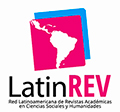Comics translation: a reflection upon the cultural identity considering the Jew stereotype in the language of comics
DOI:
https://doi.org/10.11606/issn.2317-9511.v27i0p217-246Keywords:
Jew stereotype, cultural identity, comics, Translation StudiesAbstract
In a narrative such as comics, in which there is an interdependent relationship between text and image in the construction of meaning, it seems more likely that translation strategies tend to be more literal (Vinay & Dalbernet 1995). This idea exists because the verbal text, in principle, could not contradict the illustration that accompanies it, but it should keep the relationship established between the two codes found in the original. Also, we consider the nature of innovation in relation to existing rules of verbal and nonverbal languages a central aspect of formation of Comics, from the point of view of its artistic creation, since we have "a successful hybridization between illustration and prose" (Eisner 2010). Thus, the innovative and potentially plastic language of comic books, due to the freedom of creation, provides an ideal space to deal with sensitive issues and instigate debate and reformulation of concepts rooted in a given culture. That said, we will briefly present the data from our research on how the treatment of the Jewish stereotype is for the study of cultural identity in a case study: the translation of The History of the Jews, Stan Mack. We argue that the enjoyment of a cultural object in the language of comics, when translated and across borders, results in intercultural communication that promotes dialogue, the evolution of thoughts, concepts and ways of seeing the world through contact with the Other in a higher speed than the one found in reading prose books. Thus, we seek to identify if the translation had a tendency to take out the stereotype or legitimate it in the construction of meaning. In other words, we want to investigate whether there was, in the translation, a review of the stereotypes present in the original works. We analyzed the lexical items and graphic elements that refer to the universe of Jewish culture and analyzed how they were brought to the translation.
Downloads
Downloads
Published
Issue
Section
License
Copyright (c) 2023 Gisele Marion Rosa

This work is licensed under a Creative Commons Attribution-NonCommercial-ShareAlike 4.0 International License.
Autores que publicam nesta revista concordam com os seguintes termos:
- Autores mantém os direitos autorais e concedem à revista o direito de primeira publicação, com o trabalho simultaneamente licenciado sob a Licença Creative Commons Attribution BY-NC-SA que permite o compartilhamento do trabalho com reconhecimento da autoria e publicação inicial nesta revista.
- Autores têm autorização para assumir contratos adicionais separadamente, para distribuição não-exclusiva da versão do trabalho publicada nesta revista (ex.: publicar em repositório institucional ou como capítulo de livro), com reconhecimento de autoria e publicação inicial nesta revista.
- Autores têm permissão e são estimulados a publicar e distribuir seu trabalho online (ex.: em repositórios institucionais ou na sua página pessoal) a qualquer ponto antes ou durante o processo editorial, já que isso pode gerar alterações produtivas, bem como aumentar o impacto e a citação do trabalho publicado (Veja O Efeito do Acesso Livre).







